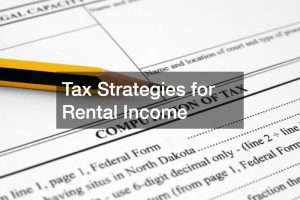Introduction
Building a rental property portfolio can be a powerful strategy for wealth creation and long-term financial security. Not only does it provide a steady stream of passive income, but it also contributes to the diversification of your investment portfolio, ultimately bolstering your overall financial position. For homeowners and investors alike, understanding how to build a rental property portfolio is crucial for maximizing investment returns.
This comprehensive guide will walk you through actionable steps, making the process less daunting and more achievable. From assessing your financial situation to choosing the right rental markets and understanding critical tax strategies, each section is designed with you in mind. By the end, you’ll be equipped with the tools you need to make informed decisions, manage your properties efficiently, and scale your portfolio over time.
You’ll also discover insider tips on how to minimize your tax burdens, including strategies on how to pay no taxes on rental income. These tips will help you optimize your profits and make the most out of your investments. So, let’s dive in and start your journey towards building a successful rental property portfolio.
1. Assessing Your Financial Situation Before Investing
Evaluate Your Current Finances: Before venturing into the world of property investments, it’s crucial to evaluate your current financial standing. Having a robust emergency fund and manageable debt levels are essential prerequisites. An emergency fund ensures that you can handle unexpected expenses without tapping into your investment money. Similarly, keeping your debt levels in check can help you qualify for favorable mortgage rates. This step is fundamental as it lays the financial groundwork for your real estate endeavors.
Determine Your Investment Goals: Clearly defined investment goals can direct your property purchasing decisions effectively. Are you looking for long-term cash flow, property appreciation, or a mix of both? Knowing your objectives can help you tailor your investment strategy and choose properties that align with your ambitions. This clarity reduces the risk of making haphazard or emotionally driven decisions, ensuring that each property you acquire contributes to your overarching financial objectives. It’s essential to have a roadmap to follow as you build your rental property portfolio.
Check Your Credit Score: Your credit score plays a pivotal role in your ability to secure loans with favorable terms. A higher score can open doors to lower interest rates, which can significantly impact your cash flow and profitability. Regularly monitoring your credit score and taking steps to improve it can provide substantial long-term benefits. Paying down high-interest debt and disputing any inaccuracies on your credit report are effective ways to boost your score. A good credit score is an asset that can enhance your investment capabilities.
Actionable Tip: Create a checklist to evaluate your financial readiness for real estate investment. Include items like having a sufficient emergency fund, manageable debt levels, a clear understanding of your investment goals, and a good credit score. This checklist will serve as a practical tool to ensure you are financially prepared before making any investment moves. Taking the time to carefully assess your financial situation will help you lay a solid foundation for your rental property portfolio. It’s the first crucial step towards achieving long-term success in real estate.
2. Researching the Right Rental Markets

Neighborhood Selection: The choice of neighborhood significantly impacts the success of your rental property investment. Research areas with high rental demand, as these locations are more likely to offer continuous cash flow. Look for neighborhoods with good amenities, such as schools, public transport, and shopping centers, as they tend to attract higher-quality tenants. Additionally, consider the potential for property value growth, as appreciating markets can increase your property’s worth over time. Selecting the right neighborhood sets the stage for a profitable investment.
Evaluate Local Rental Rates: Understanding local rental rates is crucial to ensure your property will generate sufficient income. Online tools like Zillow and Rentometer can help you assess the prevailing rental prices in your chosen area. This data allows you to make informed decisions about whether a specific neighborhood aligns with your financial goals. Moreover, understanding rental rates can guide your pricing strategy, ensuring you set competitive yet profitable rent levels. Accurate evaluation of rental rates is a key component in building a successful rental property portfolio.
Key Market Trends: Staying informed about current market trends can significantly enhance your investment strategy. Recent housing market studies show that rental demand is growing in urban centers and college towns, driven by factors like job opportunities and student populations. Leveraging such statistics can help you focus on areas with promising growth prospects. Identifying these trends early enables you to make strategic investments that capitalize on emergent market dynamics. Keeping abreast of market trends ensures that your investment decisions are data-driven and forward-looking.
Actionable Tip: When comparing rental markets, consider factors such as crime rates, school districts, and job growth. High crime rates can deter potential tenants, while good school districts and job opportunities can attract long-term tenants, reducing vacancy rates. Use online resources and local government data to evaluate these factors, ensuring you select a market that aligns with your investment strategy. Comprehensive market analysis is vital in identifying the best areas to invest in and balancing potential risks with rewards. This due diligence will help you select optimal markets for building your rental property portfolio.
3. Choosing the Right Type of Rental Property
Single-Family Homes vs. Multi-Family Units: Choosing between single-family homes and multi-family units is a significant decision with various implications. Single-family homes are generally easier to manage and attract long-term tenants, but they offer lower cash flow compared to multi-family units. On the other hand, multi-family properties can generate higher returns but require more oversight and management skills. Understanding the pros and cons of each option can help you choose the right type of property that aligns with your investment goals. This decision is crucial as it influences your management style and cash flow potential.
Turnkey Properties vs. Fixer-Uppers: Another crucial decision is whether to invest in turnkey properties or fixer-uppers. Turnkey properties are ready to rent and require minimal initial effort, making them ideal for investors looking for immediate income. Conversely, fixer-uppers can offer significant value for experienced investors willing to take on renovations. These properties can be purchased at lower prices and renovated to increase value and rental income. Both options have their merits, and the best choice depends on your risk tolerance, expertise, and investment strategy. Weighing these options can lead to more informed and profitable investment decisions.
How to Find Good Deals: Finding good deals on rental properties requires a combination of research and networking. Real estate agents can provide access to exclusive listings, while online platforms offer a broad range of options. Attending local property auctions can also uncover lucrative opportunities. Additionally, networking with other investors and industry professionals can lead to word-of-mouth deals that are not publicly listed. Employing multiple strategies increases your chances of finding undervalued properties that offer excellent investment potential. Proactive deal hunting is essential to building a successful rental property portfolio.
Actionable Tip: When evaluating potential rental properties, prepare a list of questions to ask, such as the property’s history, current tenant situation, and any upcoming maintenance needs. Understanding the property’s background can help you assess its investment potential. Ask about the neighborhood, property taxes, and any future developments that could impact the property’s value. A thorough evaluation process ensures that you make well-informed decisions, minimizing risks and maximizing returns. This meticulous approach is indispensable in choosing the right properties for your rental portfolio.
4. Financing Your Rental Properties

Mortgage Options: Financing is a critical aspect of building a rental property portfolio. Traditional financing options like fixed-rate mortgages provide predictability with consistent monthly payments, while Adjustable Rate Mortgages (ARMs) offer lower initial rates that can adjust over time. Alternative financing methods, such as private loans or a Home Equity Line of Credit (HELOC), can also be leveraged to purchase rental properties. Each financing option has its pros and cons, and the best choice depends on your financial situation and investment strategy. Understanding these options helps you secure the necessary funds to expand your portfolio.
Leveraging OPM (Other People’s Money): Using other people’s money (OPM) through partnerships or investors can significantly accelerate the growth of your rental property portfolio. Forming partnerships allows you to share the financial burden and risk while benefiting from pooled resources and expertise. Investors can provide the capital needed for larger purchases or multiple properties, enabling you to scale your portfolio faster than relying solely on your funds. Properly structured, these arrangements can be mutually beneficial, offering returns for investors and growth opportunities for you. Leveraging OPM can be a powerful strategy for rapid portfolio expansion.
Tax Implications: Real estate investing offers several tax advantages that can enhance profitability. Leveraging debt in real estate, for instance, can create opportunities for tax deductions, significantly reducing taxable income. Deductions such as mortgage interest, property taxes, and maintenance costs can offset rental income. Strategic use of tax benefits can even lead to scenarios where you pay no taxes on rental income. Being aware of these implications and planning accordingly can optimize your tax outcomes, enhancing the overall return on your investments. This understanding is vital for maximizing the profitability of your rental property portfolio.
Actionable Tip: Understanding the Loan-to-Value (LTV) ratio is critical in securing financing for your properties. The LTV ratio is the percentage of the property’s value that you borrow, impacting the terms and interest rates of your loan. A lower LTV ratio often results in better loan terms and reduced financial risk. Calculating and maintaining a favorable LTV ratio can enhance your borrowing capacity and negotiations with lenders. Knowledge of LTV ratios and their impact on financing is indispensable for strategic planning and successful property acquisitions.
5. Managing Your Rental Properties
Self-Management vs. Hiring a Property Manager: Effective property management is essential for maintaining profitable rental investments. Self-managing your properties can save costs and give you direct control, but it also requires significant time and effort. Conversely, hiring a property manager can reduce your workload and bring professional expertise, but it comes at a cost. Weighing the pros and cons of each option allows you to determine the best management strategy for your situation. Your choice can impact tenant satisfaction, property upkeep, and overall portfolio performance, making it a critical decision in your investment journey.
Maintenance & Repairs: Regular maintenance and timely repairs are vital to keeping your rental properties in good condition and your tenants happy. Budget for ongoing upkeep to prevent small issues from escalating into costly problems. Addressing maintenance requests promptly can improve tenant retention and reduce vacancy rates. Additionally, maintaining the property’s condition can protect its value and ensure compliance with local housing regulations. Proactive maintenance planning is essential to sustaining the long-term profitability and attractiveness of your rental properties.
Tenant Screening Process: Thorough tenant screening is crucial to minimizing risks and ensuring reliable rental income. Screening processes should include checking credit reports, criminal history, and rental history. Reliable tenants are more likely to pay rent on time and take better care of the property, reducing the likelihood of costly evictions or repairs. Establishing a rigorous screening procedure helps you select high-quality tenants, contributing to the stability and success of your rental property portfolio. Implementing effective screening measures can safeguard your investments and enhance long-term returns.
Actionable Tip: Create a comprehensive tenant screening checklist to streamline your selection process. Include criteria such as income verification, reference checks, and background checks. Consistently applying this checklist can ensure you select the best possible tenants, minimizing risks and maximizing rental income stability. A well-defined screening process is a crucial tool for effective property management. By prioritizing tenant quality, you can foster a positive landlord-tenant relationship and maintain a successful rental portfolio.
6. Scaling Your Portfolio Over Time
Reinvesting Profits: Reinvesting rental income into acquiring additional properties can facilitate the growth of your rental portfolio. This strategy allows you to leverage the returns from your existing investments to fund new purchases, accelerating portfolio expansion. Setting aside a portion of your profits for reinvestment can create a cycle of growth and increase your overall portfolio value. This approach requires discipline and careful financial planning but can significantly enhance long-term wealth accumulation. Reinvesting profits is a powerful strategy for building a robust and diversified rental property portfolio.
1031 Exchange: Utilizing a 1031 exchange can be an effective way to defer capital gains taxes when selling and buying properties. By reinvesting the proceeds from the sale of one property into a like-kind property, you can defer paying taxes on the gains. This strategy allows you to maximize your investment capital and continue growing your portfolio without immediate tax liabilities. Understanding the rules and requirements of a 1031 exchange is essential to leveraging this tax-deferral tool effectively. Proper use of 1031 exchanges can enhance your ability to build and scale your rental property portfolio.
Portfolio Diversification: Diversification is key to managing risk and enhancing the stability of your rental property portfolio. Investing in different types of properties, such as residential, commercial, or multi-family units, can spread risk and reduce dependency on a single market segment. Additionally, considering investments in various geographical locations can further mitigate risks associated with local economic fluctuations. A diversified portfolio can provide more stable and resilient returns, increasing overall investment security. Strategic diversification is a critical component of effective portfolio management and growth.
Actionable Tip: Develop a timeline for scaling your portfolio, outlining key milestones and growth targets. Include specific strategies for reinvesting profits, executing 1031 exchanges, and diversifying your investments. This timeline can serve as a roadmap, guiding your decisions and tracking your progress over time. Having a structured plan can help you stay focused and motivated as you work towards your long-term investment goals. A clear and actionable growth plan is essential for successfully scaling your rental property portfolio.
7. Tax Strategies for Rental Income

Depreciation Benefits: Property depreciation is a valuable tax advantage that allows you to reduce taxable income by deducting the cost of the property’s structure over its useful life. This non-cash expense can significantly offset rental income, reducing your overall tax liability. Understanding how to calculate and apply depreciation can enhance your ability to maximize tax benefits and optimize profitability. Leveraging depreciation benefits can lead to substantial tax savings, making it a crucial tool in managing your rental property investments. Properly applying depreciation is essential for minimizing taxes and boosting net returns.
Tax Deductions for Landlords: Landlords can take advantage of several tax deductions to reduce taxable income. Common deductions include property taxes, mortgage interest, maintenance costs, and travel expenses related to property management. These deductions can add up, significantly lowering your tax burden. Keeping detailed records of all expenses is vital to ensure you can claim all available deductions accurately. Leveraging these deductions effectively can enhance the profitability of your rental properties. Being proactive about tax planning can result in substantial savings and increased investment returns.
How to Pay No Taxes on Rental Income: Implementing legal strategies to minimize or even eliminate taxes on rental income can optimize your investment returns. Maximizing deductions, utilizing depreciation, and leveraging tax-advantaged accounts are ways to reduce taxable income. Recent changes in tax law, such as the increased standard deduction, can further enhance tax-saving opportunities. Consulting with a tax advisor specializing in real estate can help you identify and implement these strategies effectively. By strategically managing your tax obligations, you can retain more of your rental income and enhance overall investment profitability.
Actionable Tip: Consult a tax advisor specializing in real estate to optimize your tax benefits. An experienced advisor can help you navigate the complexities of tax laws, ensuring you maximize deductions and leverage applicable strategies. Regular consultations can keep you informed about changes in tax regulations and new opportunities for tax savings. Proactive tax planning with professional guidance is essential for optimizing your rental property investments. Investing in expert advice can result in significant long-term benefits and enhanced financial outcomes.
8. Common Mistakes to Avoid When Building a Rental Property Portfolio
Overleveraging: Overleveraging by borrowing too much can be a significant risk, leading to financial instability. High debt levels can strain your cash flow, making it difficult to cover monthly expenses and leaving you vulnerable to market fluctuations. It’s essential to balance leveraging with maintaining sufficient cash reserves to manage unforeseen challenges. Careful financial planning and conservative borrowing practices can mitigate the risks associated with overleveraging. Avoiding excessive debt is crucial for maintaining the stability and long-term success of your rental property portfolio.
Ignoring Local Laws: Non-compliance with local landlord-tenant laws can lead to costly legal disputes and penalties. Understanding and adhering to regulations regarding tenancy, property maintenance, and safety standards is essential to prevent legal issues. Familiarize yourself with relevant laws in the jurisdictions where you own properties and stay updated on any changes. Ignorance of local laws is not a valid defense, making proactive compliance a critical aspect of property management. Ensuring legal compliance protects your investments and fosters positive tenant relationships.
Not Having a Contingency Plan: Failing to plan for vacancies, maintenance emergencies, or market downturns can jeopardize your rental property portfolio. Having a financial buffer in place to cover unexpected expenses is essential for managing short-term challenges without derailing long-term goals. Establishing a contingency fund ensures you can handle vacancies, unexpected repairs, or other disruptions without compromising your investment’s financial health. Proactive contingency planning is vital for maintaining stability and resilience in your rental property portfolio. Preparing for the unexpected can safeguard your investments and contribute to sustained success.
Actionable Tip: Learn from case studies or real-life examples of investors who made costly mistakes. For instance, an investor who overleveraged by purchasing multiple properties with high-interest loans struggled with cash flow issues, eventually leading to foreclosure. Understanding these pitfalls can provide valuable lessons and help you avoid similar mistakes. Real-life examples underscore the importance of prudent financial management, legal compliance, and contingency planning. Analyzing past mistakes can inform better decision-making and enhance the success of your rental property portfolio.
Conclusion
Building a successful rental property portfolio requires careful planning, informed decision-making, and strategic management. By following the steps outlined in this guide, from assessing your financial situation to selecting the right rental markets and leveraging effective tax strategies, you can maximize your investment returns. Each stage is crucial in setting a solid foundation for long-term success in real estate.
Encouraging readers to take the first step, whether it’s researching markets or evaluating their finances, is essential. Starting with a clear plan and understanding your financial goals will provide you with the roadmap to navigate the complexities of property investment. Remember, building a rental property portfolio is not a race but a steady journey. With patience, persistence, and the right strategies—like utilizing tax advantages and reinvesting profits—you can build a thriving portfolio that provides consistent income and long-term financial growth. Take the first step today, and set yourself on the path to financial independence through real estate.

